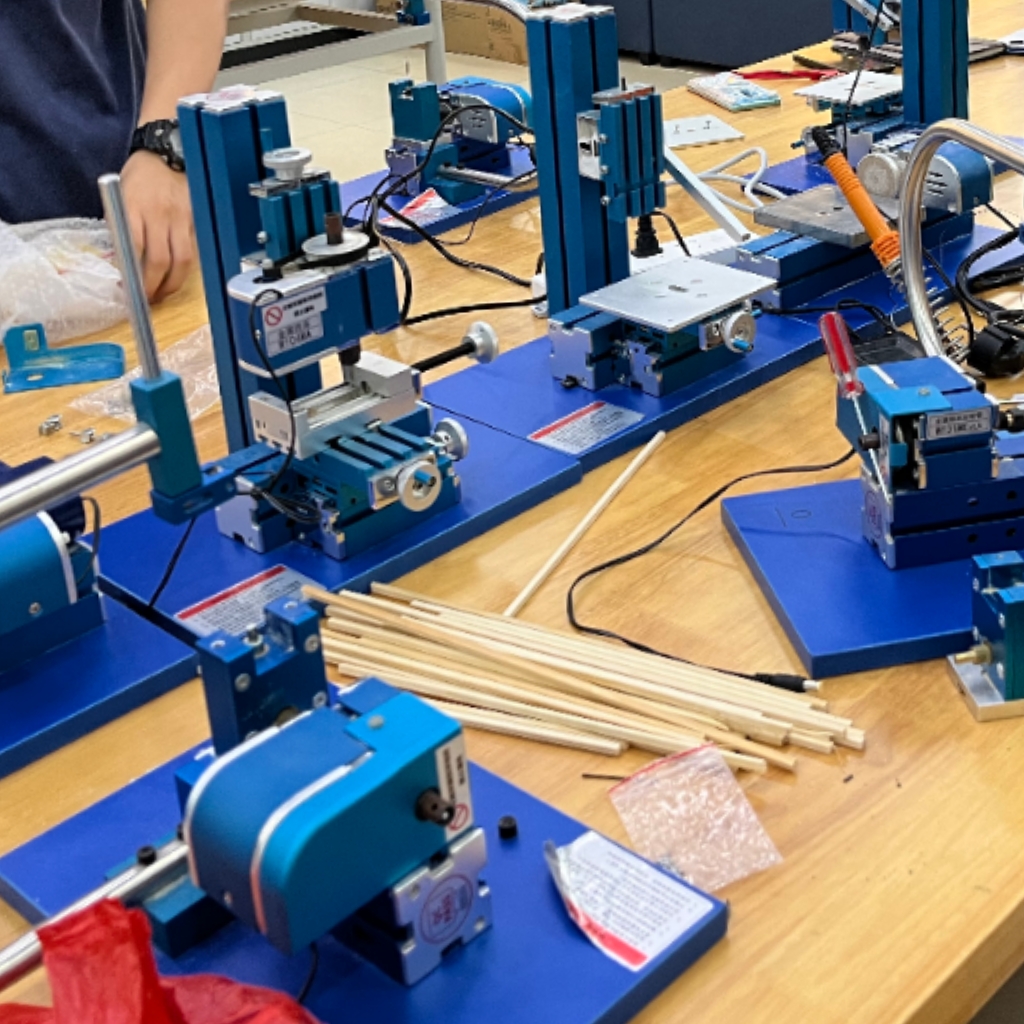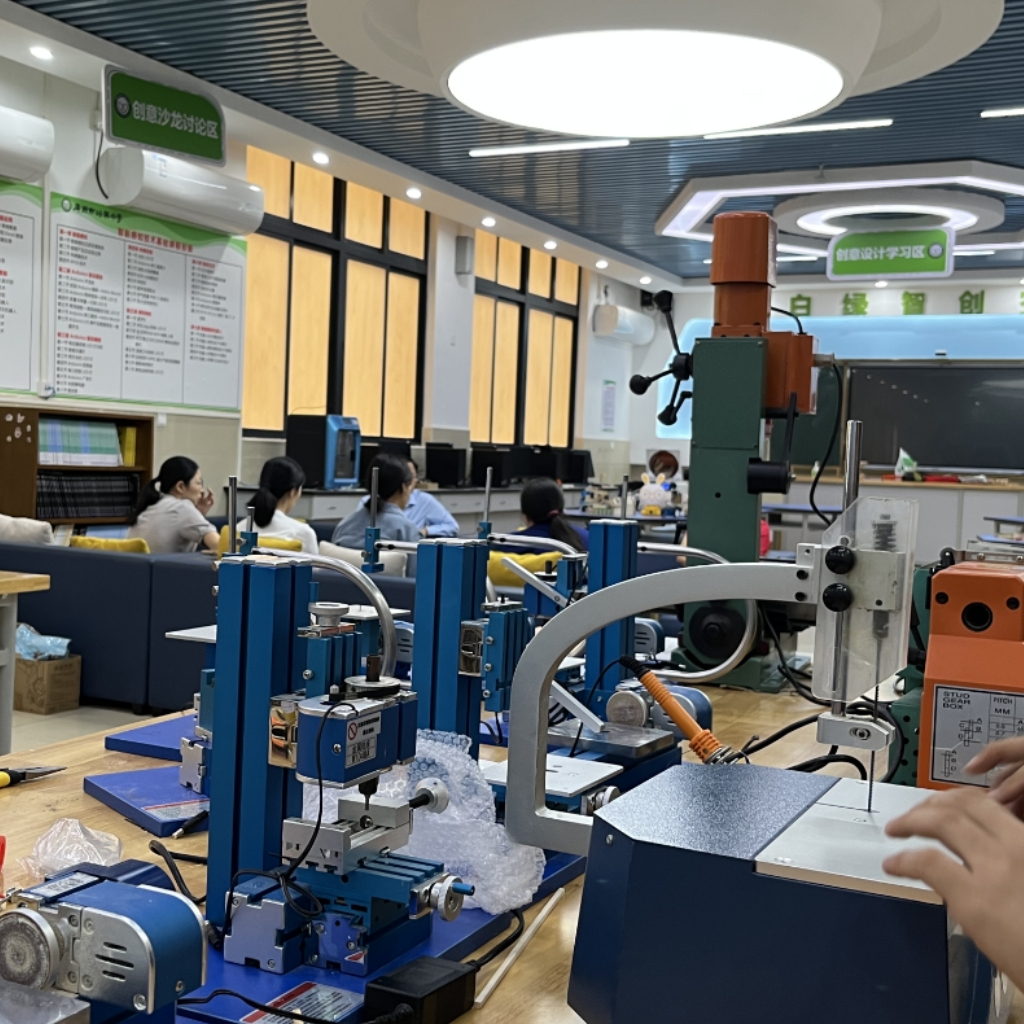Blog
Xendoll has 22 years of experience in the production of small machine tools. We will help you choose the suitable machine and share our experience in CNC machining with you.
 Aug 19, 2025
Aug 19, 2025

 721
721
The spindle is the pulsating heart of any lathe, responsible for gripping and rotating the workpiece against the cutting tool. While solid spindles exist, the hollow spindle design is overwhelmingly favored in most modern lathes, from industrial giants to precision mini lathes like those offered by Xendoll. But why is this hollow core so crucial? It's far more than just an empty space; it's a fundamental design feature enabling greater efficiency, flexibility, and capability across diverse machining tasks, making it indispensable for professionals and hobbyists alike.

I. Enabling Bar Feeding and Long Workpiece Machining (The Core Advantage)
The single most significant reason for using a hollow spindle is to facilitate bar feeding.
Continuous Production: A hollow bore allows long bars of raw material (round stock, hex stock, etc.) to pass directly through the spindle. An automatic bar feeder can then push fresh material into the work zone as each part is completed and cut off. This enables truly unattended machining, dramatically increasing productivity for high-volume part runs – a critical advantage for production shops and OEM suppliers.
Machining Long Workpieces: Even without full automation, the hollow spindle allows workpieces significantly longer than the lathe's bed to be supported at one end by the chuck and fed through the spindle bore, with the far end supported by a steady rest or tailstock center. This capability is essential for machining shafts, tubes, rods, and other elongated components that would otherwise be impossible to handle on a standard lathe. For educational settings and prototyping, this flexibility is invaluable.
Xendoll Application: While mini lathes typically handle smaller diameters, many Xendoll models feature hollow spindles suitable for smaller diameter bar stock (e.g., for producing pins, connectors, or model parts) or for supporting longer, slender workpieces common in hobbyist and educational projects using a steady rest.
II. Optimizing Rigidity and Weight
While it might seem counterintuitive, a properly designed hollow spindle offers excellent rigidity while providing significant advantages over a solid counterpart:
Superior Strength-to-Weight Ratio: Engineering principles show that a hollow tube can be significantly stiffer in bending and torsion than a solid rod of the same weight, especially as diameter increases. By removing non-critical material from the spindle's core, manufacturers can create a structure that is lighter yet retains high rigidity – essential for maintaining precision under cutting loads.
Reduced Rotational Inertia: A lighter spindle requires less power to accelerate and decelerate. This translates to faster start/stop times, improved responsiveness, and reduced energy consumption. For rapid prototyping or jobs requiring frequent spindle reversals, this is a tangible benefit.
Mitigating Thermal Effects: Removing mass from the center can also help reduce the thermal mass and potentially aid in more uniform heat dissipation, contributing to thermal stability during long runs. Xendoll's precision-engineered spindles balance this hollow design with robust construction to ensure stability and accuracy even in compact machines.
III. Reducing Vibration and Improving Surface Finish
The hollow design contributes to smoother operation:
Damping Characteristics: The internal cavity can subtly alter the harmonic characteristics of the spindle. In some designs, it can help dampen specific vibration frequencies generated during cutting. Reduced vibration directly translates to better surface finishes on the workpiece and allows for more aggressive cutting parameters without chatter.
Balancing: Modern spindles are meticulously balanced. The hollow design allows for more precise placement of balancing weights within the spindle structure if needed, further minimizing vibration at high rotational speeds. This is crucial for achieving the fine finishes demanded by machinists and required for precision components sourced by mechanical distributors.
IV. Enhancing Versatility and Functionality
The hollow bore opens doors to various practical applications beyond just holding bar stock:
Coolant/Lubrication Delivery: The spindle bore provides a direct pathway to deliver cutting fluid or coolant directly to the cutting zone through the workpiece or collet/chuck. This internal coolant delivery is highly efficient for chip evacuation and temperature control, especially in deep drilling or boring operations common on CNC lathes.
Part Ejection: In automated setups, parts cut off from the bar inside the chuck can be ejected out the back of the spindle bore using an ejector rod or air blast, clearing the way for the next piece without operator intervention.
Special Tooling/Workholding: Certain specialized chucks or collet systems utilize the hollow space for actuation mechanisms. It also allows for the use of long, thin tools (like long drills or boring bars) to be fed through the spindle for specific operations on the face of a part held in the chuck.
Hobbyist & Education Bonus: For machining enthusiasts and students, the hollow spindle simplifies tasks like drilling deep center holes in long bars or creating consistent small parts from stock, making complex projects more accessible.

Conclusion: The Hollow Spindle – A Foundation of Modern Turning
Far from being a mere design quirk, the hollow spindle is an essential engineering solution that underpins the efficiency, capability, and versatility of modern lathes. Its primary role in enabling bar feeding revolutionizes production, while its contributions to optimized weight, rigidity, vibration control, and functional versatility make it indispensable across the board. From high-volume manufacturing facilities served by mechanical distributors, to educational institutions equipping future engineers, to skilled hobbyists crafting precision parts on mini lathes, the benefits of the hollow spindle design are universal. At Xendoll, we incorporate this critical feature into our mini lathes, recognizing its vital role in empowering users – whether professional machinists, educators, or passionate makers – to achieve more precise, efficient, and creative results on the lathe. Explore the precision engineering of Xendoll lathes at https://www.xendolltools.com/.



 Show all our samples
Show all our samples
 Provide you with a free quote
Provide you with a free quote
 Answer all the questions you may have
Answer all the questions you may have
 Guided installation and other options
Guided installation and other options